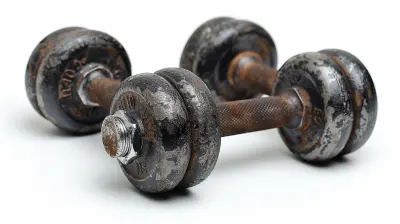How to Incorporate Strength Training into Your Sports Routine
14 October 2025
Alright, let’s cut to the chase.
You're smashing it in your sport—whether it's soccer, basketball, MMA, or even pickleball (yes, it's a thing). But there's always that nagging feeling: you can move better, hit harder, run faster, and recover quicker. That lingering edge you're missing? It's probably strength training.
Now, I know what you're thinking: _"Wait, I thought strength training was for bodybuilders?_ I don’t want to bulk up and ruin my speed and agility."
Totally valid thought—but here’s the twist: smart, sport-specific strength training won’t just keep your performance sharp, it’ll take it to the next level. You won’t turn into the Hulk overnight (unless you're downing 6,000 calories a day and living in the gym). What we’re talking about is power, injury prevention, and the ability to dominate when it counts most.
So buckle up. We're diving deep into how to incorporate strength training into your sports routine—and we're not holding back.
Why Strength Training is Your Secret Weapon
You ever watch a game and spot that one athlete who just looks like they operate on a different level? They're faster, stronger, and seem to hit the gas when everyone else is gassed out. That’s no accident. It's not just talent—it's strategic development. And strength training plays a huge role.Think of it like this: your body is your sports car. Strength training is the turbocharger that gives it that extra roar.
Here’s what adding strength work to your routine will do:
- Boost power output: Run faster, jump higher, punch harder.
- Enhance stability and control: Which means better balance, agility, and coordination.
- Reduce injury risk: Stronger muscles = stronger support for your joints and ligaments.
- Improve endurance: Muscles that are stronger don’t fatigue as fast.
- Increase confidence: And let’s be real, mental edge is half the battle.
Still with me? Good. Let’s talk about how to actually do this.
Step 1: Know Your Sport (and What It Demands)
Before you even pick up a dumbbell, you need to break down your sport. Strength training isn’t a one-size-fits-all formula. A sprinter’s program is gonna look wildly different from a swimmer’s.Ask yourself:
- Is my sport more explosive (like basketball or sprinting) or endurance-based (like long-distance running)?
- Do I need full-body power or more targeted strength (e.g., core for MMA, leg strength for soccer)?
- How often am I training or competing?
Once you figure this out, you can tailor your strength work to complement—not conflict with—your sport.
Pro Tip: Start a sports performance journal. It helps track patterns, fatigue levels, and strength progress that align with your game schedule.
Step 2: Prioritize Movement Quality Over Heavy Lifting
Here’s a hard truth: Nobody cares how much you can bench press if your movement sucks.Your body needs to move well before it moves heavy. That means focusing on:
- Mobility: Loosen up tight joints.
- Stability: Control movement during dynamic actions.
- Functional patterns: Squats, hinges, lunges, pushes, pulls—these mimic sport movements.
Incorporate exercises like:
- Goblet Squats instead of barbell squats to promote better form.
- Deadbugs and Bird Dogs to strengthen the core.
- Split Squats and Lateral Lunges to build leg strength relevant to sports.
The goal is to move like an athlete, not a powerlifter. Think quickness, symmetry, and fluid power—like a cheetah, not a bulldozer.
Step 3: Structure Your Week with Smarts
Okay, logistics time. You’re already juggling practices, drills, recovery, and maybe even games. Where does strength training fit?Here’s a sample weekly template (feel free to tweak based on your sport and level):
🗓️ Weekly Sample Layout:
- Monday: Strength Training (Lower Body Focus)- Tuesday: Sport Practice
- Wednesday: Strength Training (Upper Body + Core)
- Thursday: Skill Drills / Strategy
- Friday: Full-Body Strength (Power & Explosiveness)
- Saturday: Game / Practice
- Sunday: Recovery / Mobility Work
Spread it out. Two to four strength sessions a week is plenty—especially if they’re short and focused (45-60 minutes tops). Don’t overdo it. Quality beats quantity every time.
Insider Tip: After a high-skill day (like strategic plays or light drills), slide in a strength training session. Your central nervous system will already be fired up.
Step 4: Tweak Your Sets, Reps, and Tempo
Let’s decode the gym-speak.The way you manipulate reps and sets is what transforms a workout from a muscle-building session into a performance-enhancing masterpiece.
Here’s a cheat sheet:
| Goal | Reps | Sets | Rest | Tempo |
|----------|----------|----------|----------|-----------|
| Strength | 3-6 | 3-5 | 2-3 mins | Slow +
Controlled |
| Power | 3-5 | 3-4 | 2-3 mins | Explosive |
| Muscular Endurance | 10-15 | 2-4 | 30-60 sec | Moderate |
| Hypertrophy (Muscle Size) | 8-12 | 3-6 | 60-90 sec | Slow-Moderate |
As an athlete, focus more on strength, power, and endurance—not hypertrophy. You’re not chasing size, you’re chasing performance.
Step 5: Lift Like You Play
Let’s connect the dots between the gym and the game.If your sport demands:
- Jumping and sprinting – Do power cleans, box jumps, and medicine ball slams.
- Rotational movement (think baseball, tennis, MMA) – Do Russian twists, cable chops, and landmine rotations.
- Grip and pulling strength (rock climbing, football) – Do pull-ups, farmer’s carries, rope climbs.
Match your lifts to your sport. Make every rep translate into better performance on the field, court, or mat.
And hey, don't forget to throw in some unilateral work. That’s a fancy way of saying one limb at a time—like single-leg squats or single-arm presses. Why? Because life (and sports) rarely happens with two feet planted symmetrically on the ground.
Step 6: Don’t Skip Recovery (Your Gains Depend on It)
Let me say it loud for the folks in the back: Your body grows and gets faster during recovery, not training.Here’s how to recover like the beast you are:
- Sleep 7-9 hours/night – Non-negotiable.
- Hydrate relentlessly – Your muscles are thirsty creatures.
- Fuel up – Focus on whole foods, quality protein, and plenty of veggies.
- Stretch and foam roll – Stay limber, stay in the game.
- Cold showers/Ice baths (if you’re into that mental grind) – Shocks the system into healing mode.
Push your limits—but respect your body too.
Step 7: Keep It Fun, Keep It Fresh
Let’s face it: if it feels like a chore, you’ll ditch it.Make your strength training sessions engaging:
- Try new movements every 4-6 weeks.
- Use resistance bands, kettlebells, or even battle ropes.
- Train with teammates—it builds camaraderie and accountability.
- Compete against yourself—track your lifts, beat your own numbers.
Treat strength training like an extension of your sport, not a separate punishment session. That mental shift changes everything.
Wrapping It Up: Strength Training Isn’t Optional Anymore
Let’s break the illusion.In today's competitive sports world, talent isn’t enough. Skill isn’t either. Strength training is no longer just “something extra”—it’s the missing chapter in your athletic playbook.
Done right, it elevates every part of your performance. You’ll move with purpose, react with precision, and recover like a machine. Whether your goal is a D1 scholarship, your next championship, or just leveling up your weekend warrior status, strength training is your golden ticket.
So are you ready to get after it?
Remember—train hard, train smart, and always keep that edge sharp.
all images in this post were generated using AI tools
Category:
Amateur SportsAuthor:

Easton Simmons
Discussion
rate this article
1 comments
Solaria McCloud
Strength training is essential for improving performance and preventing injuries in sports. Integrating it into your routine doesn’t have to be complex—focus on consistency and progressively challenge yourself for the best results.
October 20, 2025 at 12:07 PM

Easton Simmons
Absolutely! Consistency and gradual progression are key to effective strength training. It’s about finding a routine that fits your sport and sticking to it for optimal performance and injury prevention.


